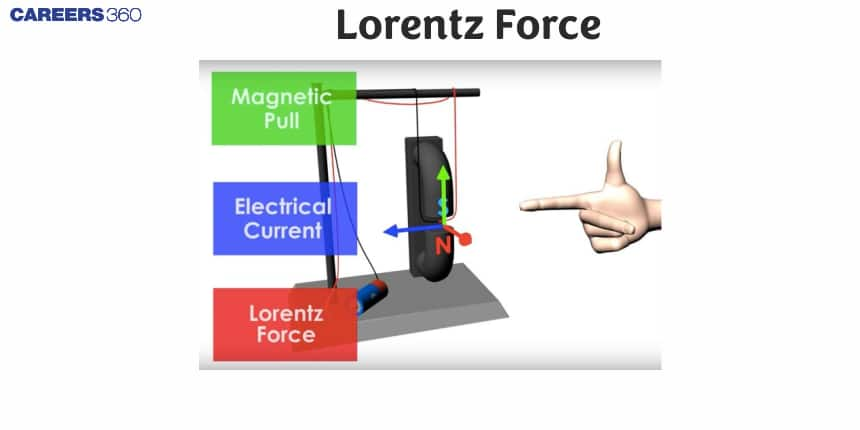Lorentz Force
The Lorentz Force is a fundamental concept in electromagnetism that describes the force experienced by a charged particle moving through an electric and magnetic field. This force, named after the Dutch physicist Hendrik Lorentz, plays a crucial role in understanding the behavior of charged particles in various physical contexts. Mathematically, it is expressed as F = q(E + v × B), where F is the force, q is the charge, E is the electric field, v is the velocity, and B is the magnetic field. In real life, the Lorentz Force is observed in numerous applications, such as in the operation of electric motors and generators, where it helps convert electrical energy into mechanical energy and vice versa. It's also fundamental to the working of devices like cyclotrons and mass spectrometers, which are used in medical treatments and scientific research. Even in our daily lives, the principles behind the Lorentz Force can be seen in the functioning of devices like smartphones and televisions, making it an essential concept in both advanced technology and everyday gadgets. In this article, we will discuss the concept of Lorentz force and solve examples for concept clarity.
This Story also Contains
- Lorentz Force
- Solved Examples Based on Lorentz Force
- Summary

Lorentz Force
The Lorentz Force is a cornerstone concept in electromagnetism, describing the combined electric and magnetic force on a charged particle. Named after the Dutch physicist Hendrik Lorentz, it is mathematically expressed as F = q(E + v × B), where F represents the force, q the charge of the particle, E the electric field, v the velocity of the particle, and B the magnetic field. This principle is vital for understanding how charged particles move in different fields and has significant practical implications.`
When the moving charged particle is subjected simultaneously to both an electric field
particle will experience electric
(i) When
and so
(ii) The particle will pass through the field following a straight-line path (parallel field) with a change in its speed. So in this situation speed, velocity, momentum, and kinetic energy all will change without a change in the direction of motion as shown

(iii)

as shown in the figure, the particle will pass through the field with the same velocity, without any deviation in the path.
In this situation, as
Recommended Topic Video
Solved Examples Based on Lorentz Force
Example 1: A charged particle is moving with velocity v in a magnetic field of induction B. The force on the particle will be maximum when
1)
2) v and B are in opposite directions.
3) v and
4)
Solution:
Lorentz Force
A particle of charge q moving with velocity V in the presence of an electric field E and a magnetic field B experiences a force
Lorentz force in magnetic field
F will be the maximum when v and B are perpendicular.
Hence, the answer is the option (2).
Example 2: In the given fig

1)+ve X-direction.
2)-ve X-direction.
3)+ve Y-direction.
4) -ve Y-direction.
Solution:
Lorentz Force
wherein
Lorentz equation
From Fleming's left-hand rule, the electron deflects in a negative y-direction.
Hence, the answer is the option (4).
Example 3: A particle of charge -16 x 10-18 coulomb moving with velocity 10 ms-1 along the $x$-axis enters a region where a magnetic field of induction B is along the y-axis, and an electric field of magnitude 104 V/m is along the negative z-axis. If the charged particle continues moving along the x-axis, the magnitude of B is
1)103 Wb/m2
2)105 Wb/m2
3)1016 Wb/m2
4)10-3 Wb/m2
Solution:
Magnetic field If V(vector), E (vector), and B (vector) are mutually perpendicular
A particle travels along $x$-the axis. Hence
The field of induction B is along $y$-the axis.
The electric field is along the negative z-axis.
Resolve the motion along the three-coordinate axis
Again
Hence the magnitude of B is 103 wb/m2
Hence, the answer is the option (4).
Example 4: A beam of
1)
2)
3)
4)
Solution:
The particle will pass through the field with the same velocity, without any deviation in the path.
In this situation, as
In putting values we get
Hence, the answer is the option (2).
Summary
The Lorentz Force is a key concept in electromagnetism, describing the force experienced by a charged particle moving through electric and magnetic fields. it has practical implications in various fields, from the operation of electric motors and generators to devices like cyclotrons and mass spectrometers. Depending on the relative directions of v, E, and B, the particle's motion can vary, demonstrating the versatility and significance of this fundamental force in both advanced technology and everyday applications.